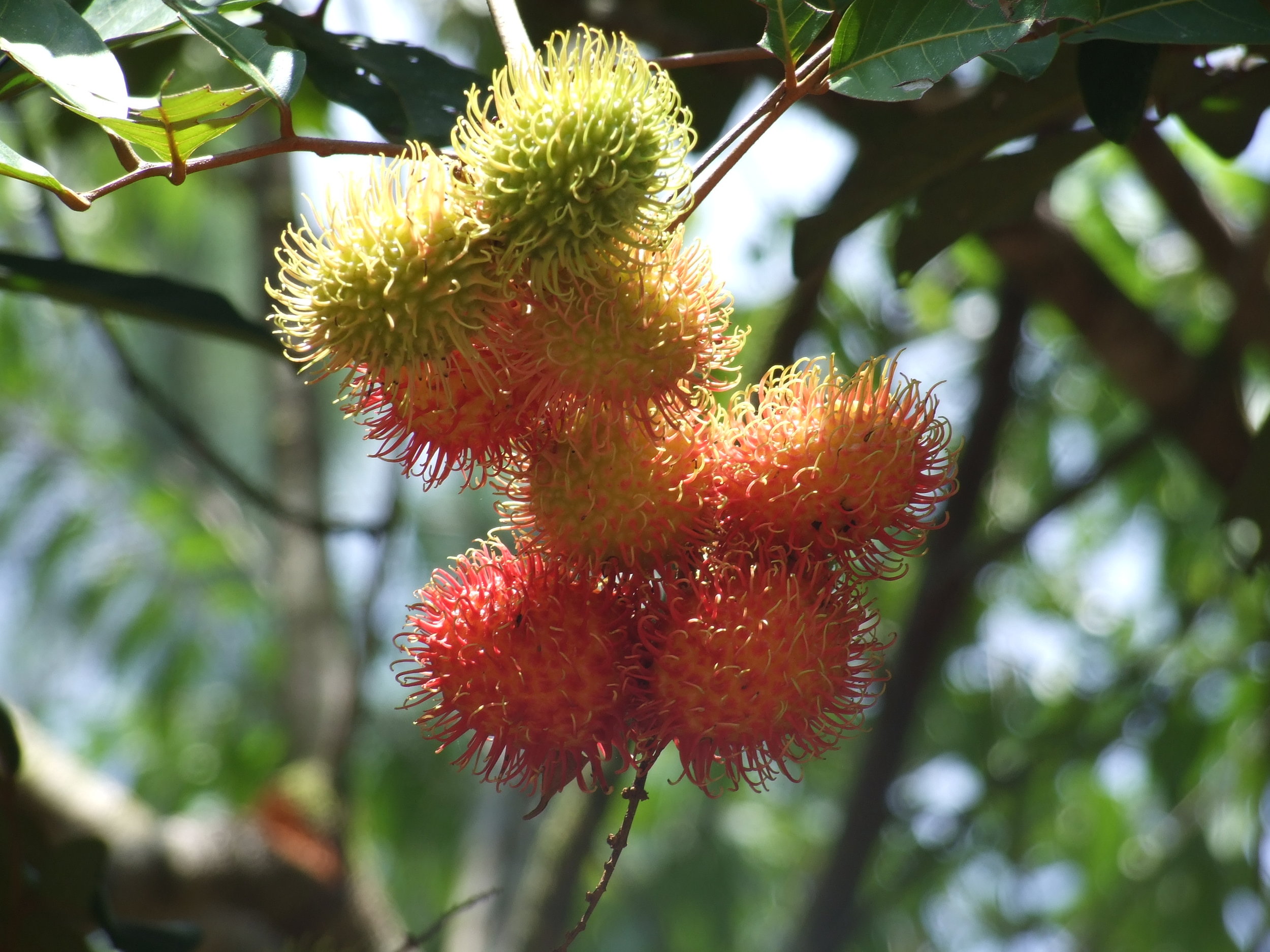Native to Malaysia and Indonesia, the Rambutan is one of the most popular and common fruits in Southeast Asia where it is grown both on a domestic level, as a patio tree, and at a commercial level. It has been introduced to some areas of Africa and Central America, like Costa Rica and Panama, to a lesser extent. The Rambutan is a medium size tree reaching 15 -25 meters in height, with a straight trunk and a dense canopy.
The fruit is the shape of an egg encapsulated in a red, yellow, or sometimes orange casing covered in soft spiny hairs. The sweet, juicy, aromatic fruit is translucent and surrounds a large seed. There exist freestone cultivars. Fruit can range in acidity, yellow varieties tending to be more acidic than red.
Reportedly the seed is edible. I forget where I first heard this, but I have eaten the seeds raw, which are not disagreeable in flavor and gave me the sense that they were especially nutritious. Any further info regarding Rambutan seed edibility would be greatly appreciated.
The Rambutan fruit, like the Lychee, is rich in sugar (11%) and vitamin C.
There are more than 100 varieties of Rambutan in Indonesia, Malaysia and Thailand. Culitvars are distinguished by whether they are best consumed fresh (Ayer Mas, Chooi, Ang, Kelip, Rongrien, Tau po Cheng), or used in preserves (Chompu, Kepala Besar).
The Rambutan is a tree from the humid tropics. It isn't found cultivated higher than 600 meters. It has not been successfully cultivated in Florida and other subtropical areas and does not tolerate long periods of drought. The tree is not especially selective in soil type although it does best in heavy clay soils with a heavy organic mulch layer.


